

Alternative species (click on the thumbnail to see the card)
Names
Scientific name
Iris
Iris versicolor
Iris ensata
Iris laevigata
Common name
Iris
Iris versicolor: Blue flag - Harlequin blueflag - Larger blue flag - Northern blue flag - Poison flag
Iris ensata: Japanese iris - Japanese water iris
Iris laevigata: Japanese iris - Rabbit-ear iris - Kakitsubata
Origin

Origin: Europe, Asia, North Africa
Ideal fertilization
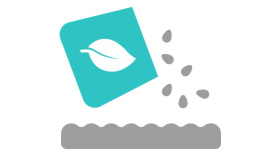
No data
Group
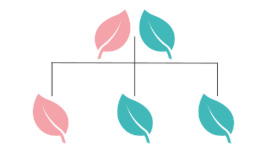
Iridaceae
Kind

Rhizome
Parameters

T°: up to -15°C or 5°F
pH: /
Hardness: /
Difficulty

Easy
Lighting

Average
Size

200 cm (79")
Plantation
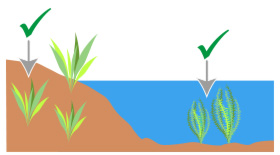
Bank and pond
Growth
No data
Presentation
Who is the Iris?
Presentation
Who is the Iris?
Beautiful in flowering period, this perennial plant will be perfectly at ease in wet areas, and even feet in the water! The Iris is ideal to colour your pools and consolidate its banks
Planting and maintenance
How to plant and maintain the Iris?
Planting and maintenance
How to plant and maintain the Iris?
The Iris is planted in the shallow areas of the basin, its ideal location being near the banks. You can immerse them up to 10 cm or 4 inches deep, no more (immersion more than 40 cm or 16 inches prevents it from blooming). The ideal land will be quite rich and rather acidic. Regarding the planting period, it is in early spring or fall.
You can choose to leave them in pots to prevent their spread and better control the appearance of your pond. In this case, plan openwork pots wider than high, which you will fill with rich soil (potting soil for aquatic plants). Plant the Iris in groups of 3, separating the feet from 10 to 30 cm or 4 to 12 inches. If you choose to plant them in the ground, space the feet at least 50 cm or 20 inches apart.
They like full sun even if they can settle for a shadowy place.
Maintenance side, not much to do (size is not necessary). You can still cut the faded flowers so you do not have to waste the plant. Note that it is necessary to separate every 3-4 years tufts that become too important because it depletes the soil, and blooms are less spectacular. Finally, nothing to do in the winter since it supports very well the cold and even it helps to its development!
Be careful, the Iris has a pretty strong wind, which can easily turn their pot. Remember to ballast him.
Farming
How to farm the Iris?
Farming
How to farm the Iris?
In general, the Iris blooms in May, June and July. After flowering, the fruits are present: they are elongated capsules containing brown seeds. However, farming by this means is difficult. For convenience, divide the rhizomes in the fall and replant them quickly.
Be careful, the Iris may have a tendency to colonize all the space that is proposed to them. You can hold it by keeping it in pots or using root barriers.
Good To know
Find all additional information!
Good To know
Find all additional information!
The Iris can be a victim of snails and slugs.
There are several varieties of Iris that can be used around the pond. These include:
- Yellow flag Iris (Iris Pseudacorus) that can measure up to 2 meters or 80 inches submerged (60 cm or 24 inches out of the water)! Its flowers are yellow, cream or fawn in May-June. Rustic, this plant can become invasive.
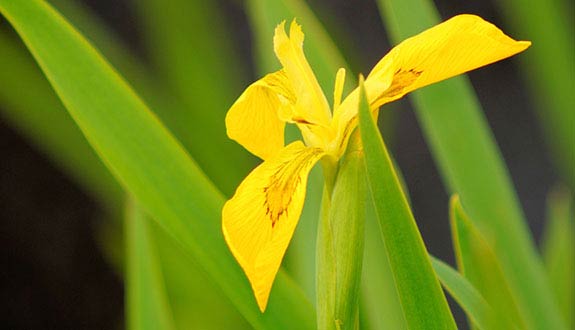
- Blue flag Iris (Iris Versicolor) which is a blue-violet variant of the marsh Iris. It measures between 50 to 90 cm or 20 to 35 inches, and flowers from May to June. To plant in wet soil (banks) or in the basin (maximum immersion: 20 cm or 8 inches).
- Japanese Iris (Iris Ensata) is more delicate. It can live a little submerged in spring and summer but will have to spend the winter dry. To make it easier to put out of the water, keep it in baskets that you just need to get out of the water when the time comes. Its large flowers are usually purple and yellow, but there are white, yellow or blue cultivars. To plant in wet soil (banks) or in the basin (maximum immersion: 10 cm or 4 inches only, from spring to autumn).

- Rabbit-ear iris (Iris Laevigata) which can measure up to 80 cm or 32 inches. Depending on the variety, it gives purple flowers (base colour), white (albla) or pink (rosea). Iris laevigata Variegata has beautiful green and white leaves. To plant in wet soil (banks) or in the basin (maximum immersion: 10 cm or 4 inches).
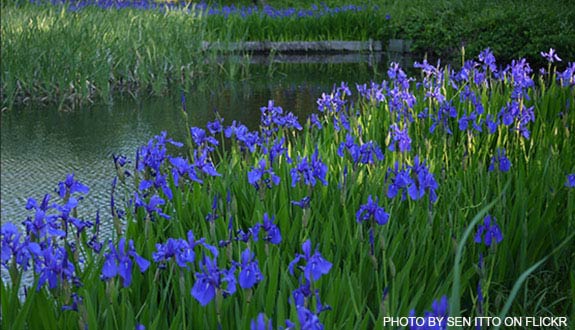
Yours photos!
Comments
Sort by:
Please login to post comments

